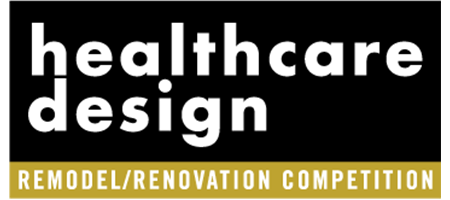AIA, EDAC, LEED AP BD+C, associate, ZGF Architects LLP, Washington, D.C.
Abernethy’s passion for research and data-driven design began during his studies in Clemson University’s graduate program in Architecture + Health. And it continues today at ZGF Architects LLP, where he’s been helping drive new design processes and evidence-based design strategies since joining the firm in 2017.
His work spans multiple project types and scales, from contributing to the Veterans Affairs design guide to inpatient behavioral health renovations to master planning and programming for a major medical campus. As a member of the firm’s Healthcare Research Initiative, he worked with a firmwide multidisciplinary team to further develop and standardize ZGF’s pre- and post-occupancy evaluation process and played a lead role in the development of the firm’s Continuous Occupancy Evaluation (COE) template, which is a tool that can be used to measure ongoing building and occupant performance.
He also serves as D.C. Health Forum chair, where he develops and disseminates best practices and case studies across the firm to support design excellence. In addition to his architectural- and research-based initiatives, he’s now involved in firmwide marketing efforts and supporting new business pursuits and interviews, including proposals for University Health System Women’s and Children’s bed tower and two regional cancer centers.
Healthcare Design: What drew you to a career in healthcare design?
Abernethy: I graduated from the University of Colorado at Boulder in 2011 at the bottom of the recession, when unemployment among architects was the highest of any major. Meanwhile, my mother had just successfully overcome breast cancer and I wanted to live closer to home in Greenville, S.C. It was then that I discovered the Clemson Architecture + Health program and a passion for the inherent complexities of healthcare design.
Describe a recent project and a lesson you learned through your work.
After helping pursue and win a women’s and children’s tower expansion, I compiled a benchmarking study of four ZGF projects to guide discussions and inform decision-making regarding universal patient rooms and their impact on the patient care unit. The resulting universal patient room options incorporated sustainable design and evidence-based design strategies that became the framework for schematic design. I love project conception. It reminds me that architecture isn’t about buildings—it’s about people. And healthcare architecture is about people at the most vulnerable times in their lives.
What’s your favorite design technology to use at work?
The 3-D printer. The architectural process demands tools for reiterative problem-solving, and the printer enables freedom and fluidity throughout the design process, from concept development to detailing. German architect Ole Scheeren said it best: “Adjust during development, develop during adjustment.”
What’s your favorite place to go for inspiration?
Nature. The recent trends in biophilia do not go far enough. Biomimicry has the potential to unlock innovative solutions to design challenges from more efficient structural systems to passive antiseptic surfaces.











